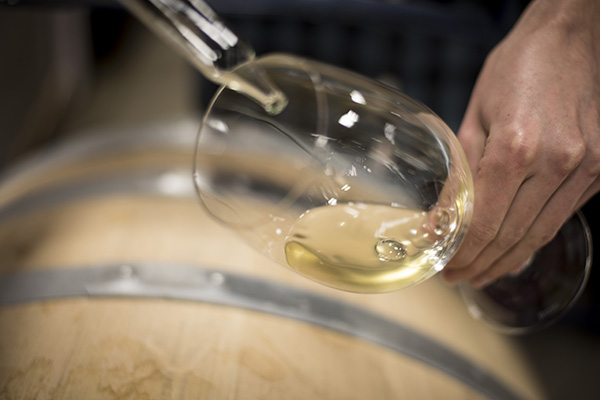A Brief History of Chardonnay in California

With tight and austere Chardonnays from “west of west” Sonoma Coast being all of the rage among sommeliers these days, it was refreshing to read Mike Dunne’s story in the Sacramento Bee, “Livermore’s long chardonnay history yields impressive results.” I hope this is just the beginning of rediscovery for Livermore Chardonnay, the best of which, like the great Burgundies of Montrachet, have just a little more flesh on their bones.
For a little background on Livermore’s long history with this variety, I thought it appropriate to republish a small article I wrote in 2012 for a special report written by Virginie Boone for Wine Enthusiast Magazine.
When aspiring chefs ask her for advice, famed educator Madeleine Kamman tells them to study history. “Without understanding the history of a region or its cuisine,” she replies, “it is impossible to create expressive food.”
Historical understanding, so essential for a chef, is even more important for winemakers seeking to craft great wines that express a sense of place. That is why we owe it to ourselves to go beyond the recent celebration of the 100th anniversary of Chardonnay in California, a media focus that relegates the efforts of a generation of winegrowers to nothing more than a simple, wise purchase of a few grape cuttings by Carl Wente in 1912. Indeed, this 1912 purchase is of minor importance in the elevation of Chardonnay into its dominant position in California viticulture.
The first documented planting of Chardonnay in California was by Charles Wetmore in 1882 for his vineyard in Livermore Valley. Wetmore obtained his cuttings from Burgundy, and widely distributed them to other growers in the valley. The Wetmore purchase was followed in 1896 by Paul Masson, who planted his Burgundian-styled vineyard in the Santa Cruz Mountains with cuttings imported from France. Carl Wente’s 1912 purchase of cuttings from the University of Montpellier was the final wave of major pre-prohibition imports of this vine.
The original plantings of Chardonnay vines in Livermore Valley were only a small step in the history of Chardonnay’s struggle for survival and ultimate triumph as California’s leading wine varietal. It was the dedication and hard work of Ernest and Herman Wente over thirty years that would lead to Chardonnay vines ideally suited to the growing conditions of Livermore Valley- vines capable of producing elegant and expressive wines with the sense of place that is a hallmark of a great wine.
Ernest and Herman Wente, regarded in their time as being among the world’s elite winemakers, recognized Chardonnay’s potential in Livermore Valley at a time when this varietal was out of favor with most California winemakers. Ernest continued its development in the vineyard, while Herman evolved his winemaking practices for the Livermore terroir.
Wentes’ efforts in perfecting California Chardonnay were so respected that Ambassador James Zellerbach sought out the Wente clone when planting his 1953 Ambassador’s Vineyard at his newly established Hanzell Winery in Sonoma. Zellerbach continued Wente’s practice of evaluation and selection, gradually establishing vines perfectly adapted to the growing conditions in Sonoma, vines that are today known as the Hanzell clone.
So ubiquitous are the Wente clone and its scions that they account for about 80 percent of all Chardonnay produced in California. Yet the story of Chardonnay does not end here. This is not the centennial of Chardonnay in California, it is the centennial of the beginning of a process that continues to this day, a process of continual adaptation of vineyards and winemaking practices in pursuit of expressive wines. The next time you pour a glass of authentic California Chardonnay, think back upon this history, and raise a toast to the generation of pioneering winegrowers who, against all odds, created a wine of lasting beauty.
I should suggest an authentic “Livermore” Chardonnay. They are hard to find, but well worth seeking out.


